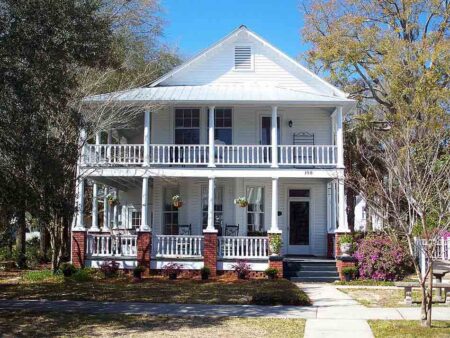FLORIDA — Answers to your questions about Sycamore trees in Florida.
What is wrong with my tree?
“I have a sycamore tree in my yard that has severe dieback in the top of the tree. I’ve noted more sycamore trees in my neighborhood and surrounding area with the same condition. The tree is 15-20 years old. The soil is the typical sandy soil found in the Fort Walton Beach area.”
Sycamore decline is common, particularly on deep sandy soils. This is a native tree, but it was found in its natural ecosystem in Florida, primarily in bottomlands along rivers and streams along the Apalachicola, Choctawhatchee, and Escambia Rivers.
It prefers moist, high-fertility soils. This is not what is typically found along the coast. On deep sandy sites with poor water holding and poor nutrient holding capacity, it is subject to live a much shorter life.
Add to this root injury and lower trunk injury due to mowers and string trimmers, damage from lawn chemicals (particularly herbicides found in weed and feed products), droughts, storm injury, soil compaction… and the trees don’t have a chance.
These off-site, weakened, stressed, and injured trees are eventually taken out by secondary pathogens whose place in nature is to take out the weak.
We frequently find Acremonium Wilt, Xylella fastidiosa, Botryosphaeria Canker, Anthracnose, Hypoxylon Canker, Armillaria, and a host of other fungi associated with these declining, dying sycamore trees. These organisms are secondary, entering the plant through a wound created by a lawnmower, storm breakage, dead roots killed by a weed and feed product, and roots injured during construction of the house with the grading, paving, etc.
Many people plant sycamores in our urban environment along the coast. But because they are subject to decline, I do not recommend the tree in most areas along the coast. There are examples of individual trees that look good and that survive to a ripe old age, but they do not represent the norm.
These secondary diseases are prevented by matching the sycamore with a site that is close to its preferred native ecosystem, preventing wounds, and never using weed and feed products.
The bottom line, what you are experiencing comes with planting sycamore trees off-site. However, in the right location, this tree can grow very large, reaching a height of 75 to 90 feet with a spread of 50 to 70 feet, becoming a nice, long-lived tree.
As is stated in this UF/IFAS Extension publication on sycamore trees, “They are best suited for soils which are moist and do not dry out. Dry soil can lead to a short life for this wet-site-tolerant tree.” https://edis.ifas.ufl.edu/publication/ST484.
Larry Williams is the Extension horticulture agent with the Okaloosa County Cooperative Extension Service, University of Florida. Contact Larry at 689-5850 or email lwilliams@myokaloosa.com.






